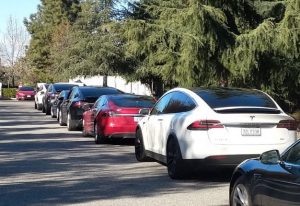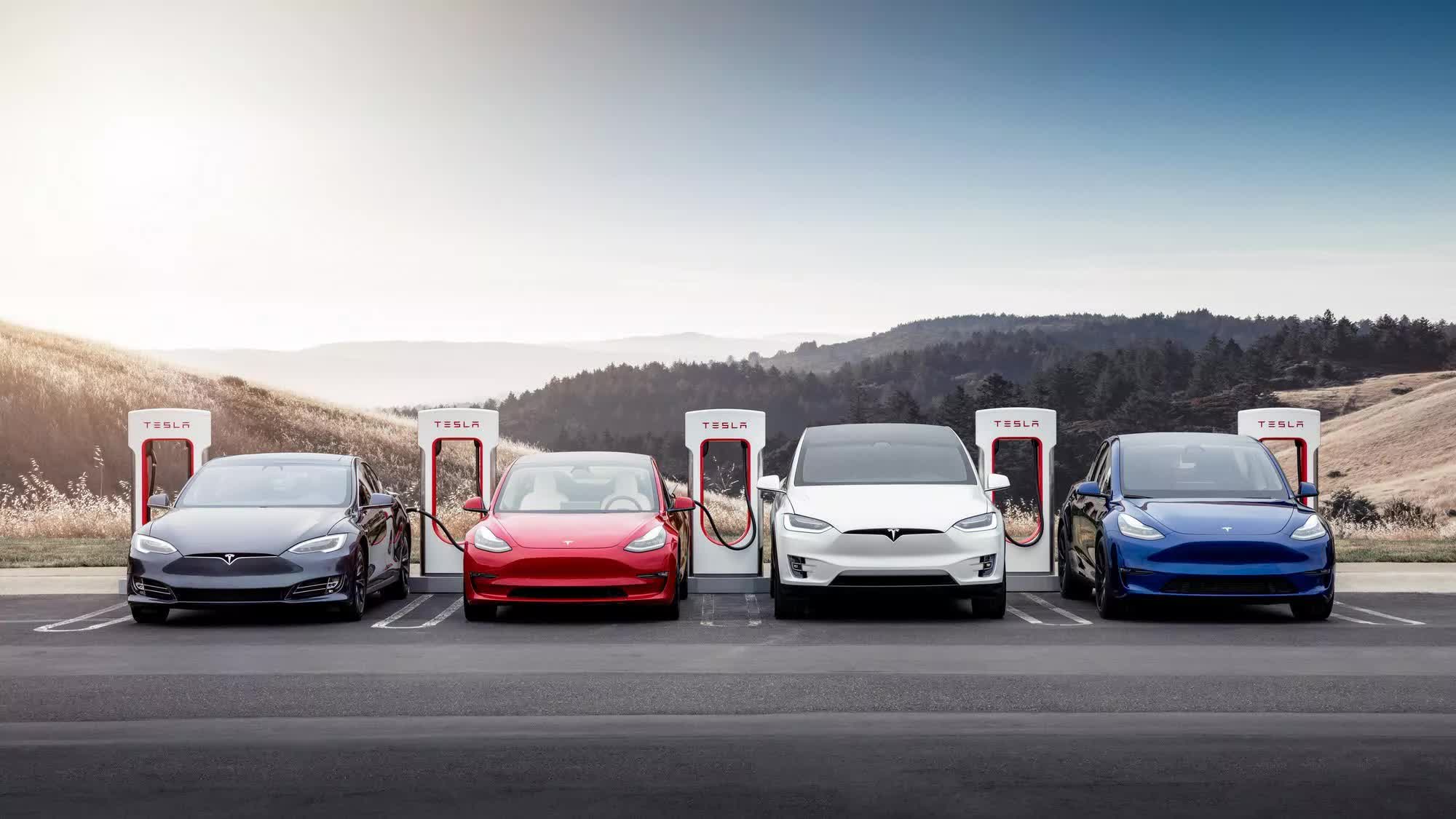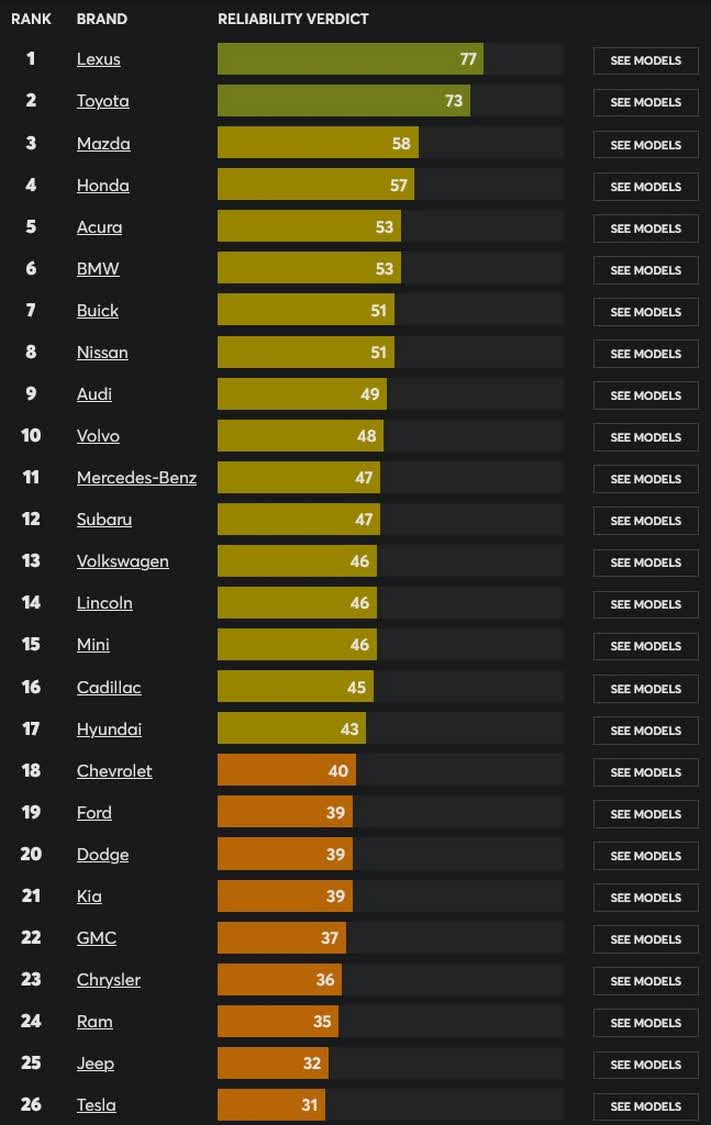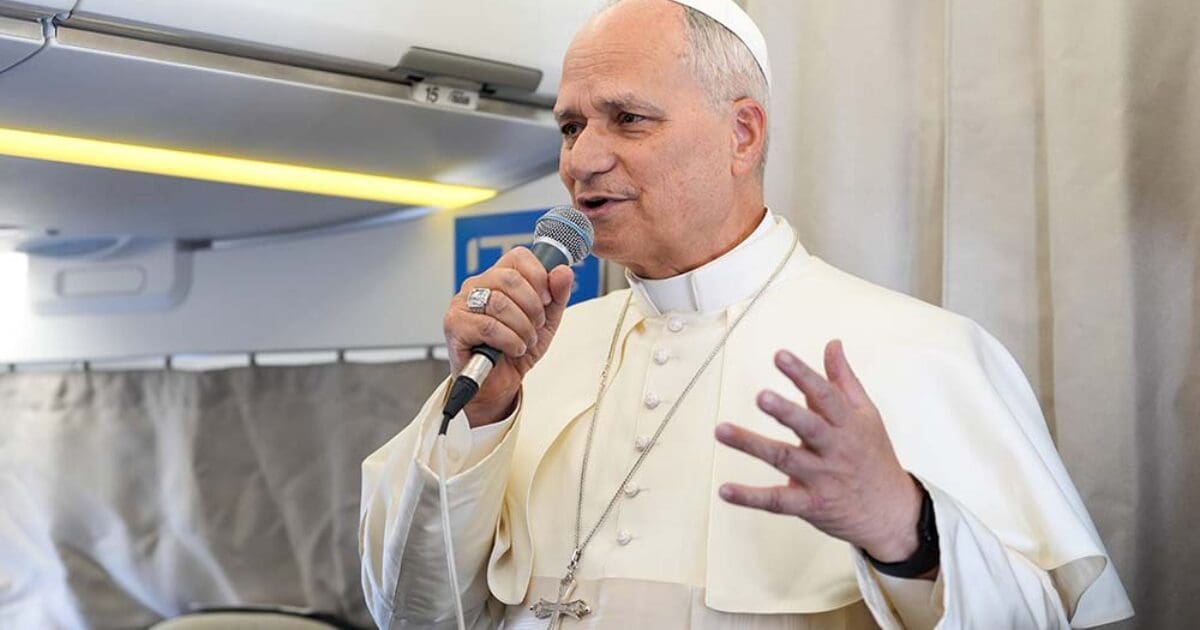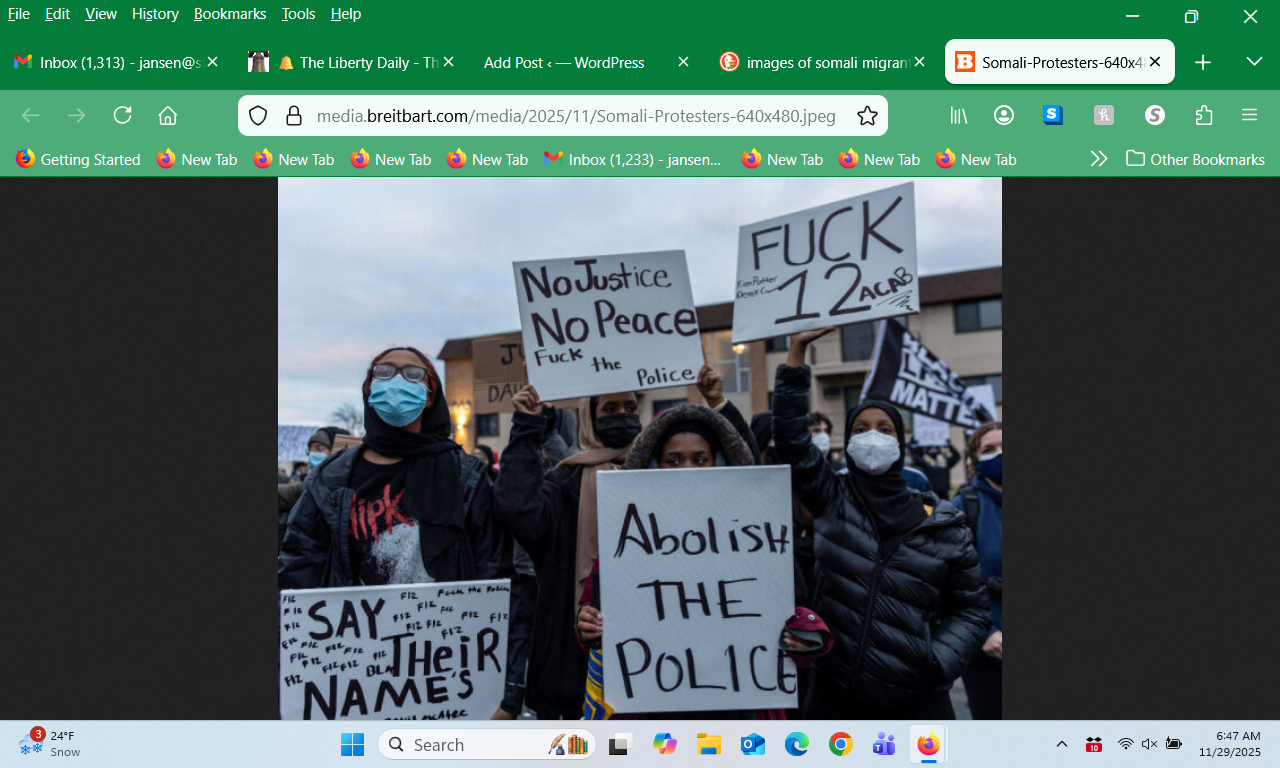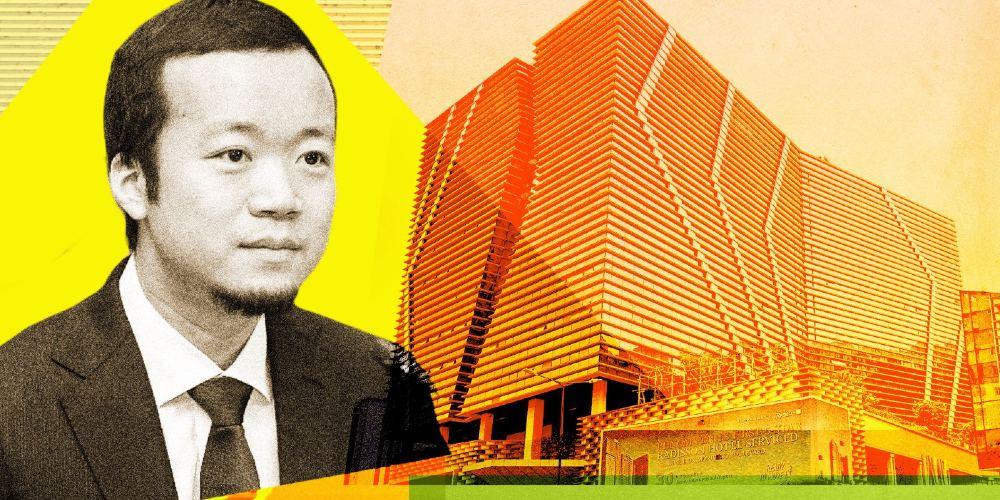The Pandemic Revealed the Most Cowardly Society of All Time
In terms of importance, the Covid-19 pandemic was the biggest event in human history since World War II. Since that time, nothing has caused as much fear across the entire planet as what began in 2020.
It wasn’t cowardice to be afraid of Covid. The fear was legitimate. The disease was real. The deaths were real. The cowardice was something else. It was accepting the moral inversion — old people sacrificing the young — without anyone raising a voice.
 Image Credit: gollykim / Getty
Image Credit: gollykim / Getty If you think that in this article I’m going to downplay the deaths, and claim that we should have faced the pandemic without fear or anything like that, you’re wrong. That’s not what this is about.
In terms of importance, the Covid-19 pandemic was the biggest event in human history since World War II. Since that time, nothing has caused as much fear across the entire planet as what began in 2020. Because of the widespread terror, with lockdowns we reached the point of completely stopping the world, something that had never happened before in history. As proof, we were left with the frightening and dystopian photos of huge empty metropolises and airplanes parked on the runways of airports.
During the Cold War, with the Cuban Missile Crisis of 1962, when the Soviet Union brought nuclear missiles to Cuba, there was a lot of fear. Some families in the US and Europe even built survival bunkers in their homes. But that didn’t even come close to the worldwide scale of the terror caused by Covid-19.
However, the fear caused by the Cold War—that feeling that the world could end in nuclear explosions at any moment—even though it was more localized and lasted for a shorter time, quickly gave rise, as a positive side, to a formidable culture: the Beatles, revolutionizing music and interpreting the world, emerged from that.
The Rolling Stones and Pink Floyd came from that fear. At the same time, the miniskirt was invented, the contraceptive pill appeared, and sexual freedoms were conquered. In 1968, known as “the year that never ended,” young people all over the world wanted to be protagonists and took to the streets of cities on every continent. The hippie movement, of peace and love, arose from that brew.
I understand it was a process of liberation, in which the planet’s youth buried that well-fed fear of nuclear war. Everyone was thinking and expressing a loud and revolutionary “We want to live.”
Covid Affected the Elderly Much More
For you to keep reading this article, you need to agree with me on one single point. You need to agree that Covid-19 is a disease that affects the elderly much more than young people and children. After all, the elderly have far more comorbidities, accumulated over a lifetime, than the young. This is extremely basic, and I’m not even going to link to scientific studies that prove this fact.
Sales Strategy
“You vaccinate not only for yourself. You vaccinate also to protect society and particularly to protect those that you love the most,” declared Albert Bourla, CEO of Pfizer, at the 2022 World Economic Forum meeting. That was the main message around the entire world. In Brazil, for example, on every television program the message was identical: “The vaccine protects both you and the people around you,” stated epidemiologist Pedro Hallal, rector of the Federal University of Pelotas, on TV Globo—Brazil’s biggest network—also in early 2022.
What few people know is that this message had been previously studied and tested. Before rolling out the vaccines, Yale scientists conducted research to find out which messages would be most effective in getting people to comply. “It is even more effective to add language that frames vaccine uptake as a way to protect others,” the scientists concluded in the study.
In other words, the entire tone of the vaccination campaign became “Protect grandma.” From that point on, with the widely publicized idea that the Covid-19 vaccines were a social pact, politicians in various parts of the world implemented health passes and, in some cases, made vaccination mandatory for everyone—including children and babies.
There’s Just One Problem with That Message
It’s not true. The most effective marketing message claimed that Covid-19 vaccines had an ability they never actually had: reducing or stopping transmission.
It was October 2022. Rob Roos, a Dutch politician, during a hearing of the European Parliament’s Special Committee on Covid-19, asked a direct question to Janine Small, a senior Pfizer executive who officially represents the company at such hearings: “Was the Pfizer Covid vaccine tested on stopping the transmission of the virus before it entered the market?” he asked. Janine answered straight: “No.”
Besides asking the manufacturer directly, another MEP put a direct question to the European Medicines Agency (EMA), which authorized the vaccines for the entire European Union. Emer Cooke, the agency’s executive director, replied by admitting: “You are indeed correct to point out that Covid-19 vaccines have not been authorised for preventing transmission from one person to another. The indications are for protecting the vaccinated individuals only.”
“EMA’s assessment reports on the authorisation of the vaccines note the lack of data on transmissibility.” Cooke added in the document.
In other words, the highly effective message that the Covid vaccines were a social pact was misleading propaganda on a global scale. But for those who pay closer attention to the industry’s track record, this comes as no surprise. According to a 2020 survey published in the journal JAMA, the largest pharmaceutical companies in the United States alone paid $33 billion in criminal and civil fines between 2003 and 2016 for illegal activities—including fraud, bribery, and false advertising.
That’s not pocket change. But the math works out: “Big pharma: penalties $2 billion/yr, revenue $600 billion/yr. Organised crime increases because crime pays,” said Peter Gøtzsche, Danish physician, professor emeritus, and co-founder of the Cochrane Collaboration—from which he was expelled for his denunciations against the pharmaceutical industry.
“Patients pay with their lives, as drugs are the leading cause of death. Why are the worst crimes on earth not stopped?” he asks.
They fooled everyone, as usual. And, as expected for something with such a massive scope of economic domination, there were no screaming headlines around the world.
Those Who Tried to Denounce It Were Censored
To fill the gap left by the major newspapers not exposing the misleading advertising, independent journalists began investigating — like Alex Berenson, former New York Times science reporter.
“It’s not time to admit that the vaccines don’t stop Covid transmission? The data is clear,” Berenson posted on his Twitter in August 2021. His statement was simply true. He cited early observational studies that showed some reduction in transmission, but not elimination — especially with the Delta variant.
The next day, Twitter permanently banned him. The reason given: violation of rules for spreading “false information about Covid-19.” Soon afterward, it was proven that the White House had pressured social media platforms to censor numerous journalists, scientists, and whistleblowers who pointed out that the vaccine propaganda was misleading.
Let me put this in the proper perspective here. In the United States, freedom of speech is so deeply rooted in society that, in the name of that principle, they tolerate people marching down the street carrying Nazi flags. In other words, in the US you can walk around with one of those flags in public, but you cannot point out that there is misleading advertising about a pharmaceutical product. That crosses the line. That’s unacceptable, you know?
Possible Meager Reduction in the Short Term
By mid-2022, the Lancet was already publishing that the efficacy of the pediatric Covid vaccine against symptomatic infection dropped to a pathetic 21% after little more than a month from administration. And even then, it was without proving that the reduction in symptomatic infection actually translated into reduced disease transmission.
At the very end of 2022, Vinay Prasad, a renowned professor at the University of California, published an important study in the BMJ — one of the world’s most prestigious medical journals. The study addressed the ethics of coercing low-risk young people (in terms of Covid-19 mortality) to take the Covid-19 vaccines through vaccine passports in schools and universities. His conclusion was alarming: the risk of a young person being hospitalized due to vaccine side effects was higher than the risk of being hospitalized from a possible Covid-19 infection.
The data made it clear: it would be necessary to vaccinate between 30,000 and 40,000 young people to prevent a single Covid hospitalization in this group. However, those vaccinations resulted in 18.5 serious adverse events — including myocarditis and pericarditis — which in turn caused between 1.5 and 4.6 hospitalizations. In other words, the number of hospitalizations caused by vaccine adverse events would exceed the number of Covid hospitalizations that would be prevented.
Children and Young People as Human Shields
The elderly control power: governments, corporations, and the media. The elderly were the real at-risk group. The elderly ordered children and young people — who were at very low risk from the disease — to get vaccinated under the pretext of “protecting grandma.” In other words, protecting themselves. All of it based on unproven propaganda, as the Pfizer executive and the EMA director openly admitted, that the vaccines would reduce transmission.
Only one government health authority ever came close to a disguised apology for once having recommended Covid-19 vaccines for children and adolescents. That was Denmark’s Health Minister, Søren Brostrøm, in early 2022. He did it because he had once recommended the vaccine for children and adolescents aged 5 to 17. Even before Prasad’s study, in a TV interview commenting on the Danish government’s decision to end the program, Brostrøm said: “With the benefit of hindsight, we didn’t gain much from expanding the vaccination program to children in terms of epidemic control. But that’s with the benefit of hindsight.”
Yet in many countries, where there was plenty of product available, they went the opposite way and started recommending Covid vaccines for babies from 6 months of age — as happened in the United States and Brazil.
A side note: Brazil went even further and, starting in 2023, made Covid-19 vaccination mandatory for babies — becoming the only country in the world to do so. In other words, Brazil turned itself into a dumping ground for pharmaceutical products rejected everywhere else. After all, in the US, even though it was recommended for babies from 6 months, fewer than 5% of parents complied.
Second side note: now, in 2025, the United States has withdrawn that recommendation, aligning itself with most European countries. But in Brazil, this insane mandate still remains in force.
My Own Experience
In early 2023, shocked by the absurdity of Brazil being the only country in the world to make Covid-19 vaccination mandatory for all babies from 6 months of age — on top of many schools and universities still requiring it for enrollment — I got into a discussion with a pediatrician who is also a pharmacist and professor of medicine at one of Brazil’s most prestigious federal universities. I genuinely believed that simply showing the latest scientific evidence would be more than enough for every university in Brazil to take an official institutional stand against it, and that this governmental madness would collapse.
During the exchange, I sent him the link to an article in Science titled “Does Covid-19 vaccination still make sense to mandate?” Published in March 2023 and written by Science’s Germany correspondent, it stated: “It has become clear that vaccine-induced immunity quickly loses its ability to prevent infection and onward transmission of the most recent variants,” the author concluded.
The professor — who is over 60 — complained that the piece in Science was not a peer-reviewed research paper where he could check the methods, results, and discussion; it was merely a news/opinion article: “This is just a report by Gretchen Vogel pointing out the need to review certain vaccination criteria, but it does not invalidate the vaccines’ importance in pandemic control,” he replied.
Since the professor demanded a proper scientific paper with all the calculations and methods, I immediately sent him Prasad’s study — the one showing that 30,000 to 40,000 young people would need to be vaccinated to prevent a single Covid hospitalization, while generating roughly 18 serious adverse events and causing between 1.5 and 5 hospitalizations due to cardiac problems in those same young people.
The professor did not deny the serious side effects or the heart problems. He simply thought of something else: “They did not discuss the risk of disease transmission to susceptible (vulnerable) contacts in that environment or in households. The paper did not question the vaccines’ protective effect and their positive impact on the pandemic.”
And the Effectiveness Drops Quickly…And Even Turns Negative
Just a few months later, in mid-2023, the Cleveland Clinic — one of the largest hospital systems in the United States — published a study examining vaccine effectiveness among its more than 50,000 employees. They compared unvaccinated and vaccinated individuals, and also compared the effect in those who had received few versus all recommended doses.
The study was rigorous and had strong points: since it was a hospital institution, testing was strongly encouraged among staff at the slightest suspicion — even to excuse them from work. Therefore, case detection was tightly controlled.
Until then, we already knew that effectiveness against Covid-19 infection was low and waned rapidly, and we still didn’t know for sure whether it reduced transmission at all. With this study, we learned that effectiveness didn’t just keep falling — it actually became negative. In other words, it increased the chance of getting infected, doing exactly the opposite of what a vaccine is supposed to do.
“The greater the number of vaccine doses previously received the higher the risk of Covid-19,” the Cleveland Clinic scientists wrote.
In short, the now-consolidated information is: any reduction in infection risk is transient, drops rapidly, damages the immune system, and eventually becomes negative.
It went very wrong.
Convenient Forgetting
From the start of the pandemic until today, we’ve gone through more than five years, almost six. It was one of the biggest disruptions to everyday life in history. At the same time, no one talks about the subject in the media, leaving it off the agenda for conversation circles or get-togethers with friends.
There is, implicit in this, a strong interest in making the whole of society forget the matter and look forward, to other things.
If we were talking about recent history, all of society would have to confront a systematic review published in 2025 in Health Affairs Scholar. This study analyzed 132 other studies on lockdowns in the US and pointed to a public health disaster: harmful effects in more than 90% of indicators of mental health, obesity, and health-related social needs (child development, employment, access to food, economic stability). But it served to save lives, right? They found no evidence of that: “little or no effect on Covid-19 mortality,” the scientists wrote.
If the subject were still of interest, everyone would be following a Taiwanese study with nearly 3 million participants, published in 2025 in the International Journal of Medical Sciences. This study compared vaccinated and unvaccinated individuals and found, among the Covid-19 vaccinated, an 84% increase in the risk of needing dialysis after one year of follow-up, even after adjustments for age, comorbidities, and other renal risk factors. Almost double.
After so many governments forcing the product on people, with support from the media, entities, universities, and corporations, it’s really better not to highlight the Italian study covering the entire population of a province (296,015 people). With 30 months of follow-up, the study found, in the comparison between Covid-19 vaccinated and unvaccinated, a 54% increase in the risk of hospitalization for breast cancer among vaccinated women, plus increases in colorectal cancer (34%) in vaccinated and bladder (62%), also in vaccinated.
These findings were later confirmed by a Korean study with 8.4 million participants that found similar patterns in six types of cancer, also comparing vaccinated and unvaccinated: prostate (69% higher risk), lung (53%), thyroid (35%), gastric (34%), colorectal (28%), and breast (20%), with risks varying by age, sex, and vaccine type.
If the pandemic were still on the agenda, we’d have to talk about the Japanese study that saw accelerated progression of pancreatic cancer among vaccinated, compared to unvaccinated, confirming the data from Korea and Italy.
It’s really better that people forget, because otherwise we’d have to talk about the Israeli study with 500,000 children. This study also compared vaccinated and unvaccinated individuals and found a 23% increase in autoimmune diseases among vaccinated children during the study period. And in the long term? We’ll just have to wait and see.
With the topic in conversation circles, we’d have to discuss another study with 500,000 people, also from South Korea. This one found a 22.5% increase in Alzheimer’s cases among the vaccinated compared to those who chose not to take the product. In addition to a 137% increase in mild cognitive impairment — the onset of Alzheimer’s — during the study period.
How would newspapers, which are mostly run by the elderly and mostly supported coercing young people to get vaccinated, report another South Korean study published in a Nature group journal with more than 2 million patients that, when comparing vaccinated and unvaccinated, saw brutal increases in psychological disorders — like 68% more depression among the vaccinated, 44% more anxiety, dissociative disorders, stress-related disorders, and 93% more sleep disorders? Hard to make that a headline, let’s say.
With the topic still buzzing, we’d all have to talk about another Israeli study that followed more than 220,000 pregnancies and found increases in spontaneous abortions and stillbirths after Covid-19 vaccines among vaccinated pregnant women, compared to unvaccinated pregnant women.
These are large observational studies in reputable journals, with controls. If we reject these, we need to reject the observational studies that “prove” vaccines saved millions of lives. You can’t accept one standard and reject the other. After all, the original RCTs (gold-standard studies) for the vaccines didn’t show reductions in mortality. Yet in the “official narrative,” for benefits like reduced deaths, observational studies are treated as definitive causal proof.
“The vaccines saved X million lives” becomes a headline, and methodological limitations are downplayed. For harms (cancer, myocarditis, etc.), observational studies are dismissed as “just correlation” and RCTs are demanded (which will never be done for ethical reasons). And “We can’t claim causality” becomes the mantra. (Here, I’m putting you, the reader, at an honest crossroads: either accept both types of studies or reject both. There’s no escaping while maintaining intellectual integrity.)
If recent history were a topic of everyday interest, people would certainly question the curiosity of so many studies comparing vaccinated and unvaccinated coming only from South Korea and Israel. In that case, the recent news published in the Telegraph from England would probably echo far and wide. They reported that the British government was caught hiding data linking Covid vaccines to excess deaths, and the government’s excuse was that it was to “avoid distress or anger.”
In other words, there are many more people wanting to research this and other diseases, but most governments are withholding the data. The data already point to an ugly reality and an even worse future, and it may just be the tip of the iceberg.
If we keep talking about the pandemic, we’d have to mention that the Telegraph — official narrative, after all, it’s one of the United Kingdom’s most important newspapers — recently reported a revision of the numbers, based on a new calculation from Stanford University. “ Covid-19 vaccines ‘saved far fewer lives than initially thought.’”
Before, the WHO was talking about 20 million lives saved by Covid-19 vaccines. Now they’re talking about a fraction of that: just 12.5% of the WHO’s estimate. The news article carefully explains that previous calculations were “excessively optimistic.” It wasn’t misleading propaganda, folks. It was optimism, got it?
And the news goes on: “Aggressive mandates and zealotry to vaccinate everyone at any cost were probably a bad idea.” In other words, the passports weren’t to create demand and generate profit by selling the product to those who never needed it. It was just a bad idea, understand? A little innocent scientific slip-up, with no advantage for anyone, you know?
But then I ask: would anyone be surprised if, in the next revision down the line, they say it saved no one? Personally, I wouldn’t. Or that, in a slightly longer term, in light of studies comparing critical diseases between vaccinated and unvaccinated, the Covid-19 vaccines killed more than they saved, becoming humanity’s greatest medical disaster? Personally, I wouldn’t.
And if we were all analyzing the pandemic, we wouldn’t look only at the health issue. We’d have to be talking about how it was the greatest transfer of wealth in human history from the poor to the billionaires. That’s not mere rhetoric. Yes, it was the greatest in history, according to the Oxfam Global 2022 report. During the years 2020 to 2022, while billions of people faced job losses, hunger, and extreme poverty, billionaires saw their fortunes explode, driven by economic stimulus packages, stock market surges, and record corporate profits.
“Ten richest men double their fortunes in pandemic while incomes of 99 percent of humanity fall” is the report’s title.
“The world’s ten richest men more than doubled their fortunes, from $700 billion to $1.5 trillion — at a rate of $15,000 per second or $1.3 billion per day — during the first two years of a pandemic that saw the income of 99% of humanity fall and more than 160 million people pushed into poverty,” the data explained. “A new billionaire emerges every 26 hours, while inequality contributes to one person dying every four seconds.”
Certainly, if society were discussing this, we’d have various intellectuals raising questions, especially about how all of this was planned. According to another article in the Telegraph from England, scientists admitted to using fear to control behaviors. “Scientists on a committee that encouraged the use of fear to control people’s behavior during the Covid pandemic admitted that their work was unethical and totalitarian.” Really? I could never have imagined.
“There were discussions about the need to use fear to encourage compliance, and decisions were made about how to ramp up that fear. The way we used fear is dystopian,” one scientist told the Telegraph.
“Clearly, using fear as a means of control is not ethical. Using fear smacks of totalitarianism. It’s not an ethical stance for any modern government. By nature, I’m an optimistic person, but all this has given me a more pessimistic view of people,” said Gavin Morgan, psychologist on the scientific team, to the newspaper.
“The use of fear was definitely ethically questionable. It was like a strange experiment. In the end, it backfired because people got too scared.”
And everyone seeing the topic as a turned page.
Cowardice and Cultural Void
The Cold War generation was forged by old men who held power over the nuclear button. The young people’s response was a thunderous: “Fuck you, we’re going to make art, love, and revolution.”
Our generation was forged by old men in power ordering children to be vaccinated so they could serve as human shields. The response was silent obedience.
Five years after the Missile Crisis, the Beatles released Sgt. Pepper’s Lonely Hearts Club Band. It was a revolution in music. On the radio it competed with the Rolling Stones’ hit “(I Can’t Get No) Satisfaction.” Five years after the lockdowns, our society learned how to hold meetings on Zoom.
The Cold War produced a sexual revolution, the hippie movement, the miniskirt, young people taking to the streets in the US, Rio, Mexico City, Paris, Africa, and Asia. It produced May ’68. An existential fear generated a monumental cultural explosion. During Covid, we posted pictures of homemade bread on Instagram.
Cold War: smaller in global scale, generated questioning and a monumental cultural explosion.
Covid: the greatest disruption in modern history, generated absolute cultural emptiness.
And where is the movement that emerged from this collective experience of fear? Nothing. We have TikTok dances. Humanity went through the biggest collective trauma since World War II and came out…smaller. More fearful. More cowardly. More willing to obey. More willing to sacrifice the young to protect the old. And not even with a single Woodstock to show for it.
When Science, the Wall Street Journal, and even the scientific community itself admit that mandates no longer make sense? Silence. No one apologizes. No one reflects. They simply change the subject. In many places, the mandates continue to this day, as in Brazil.
What makes it even more perverse is the grotesque moral inversion. Throughout history, the old sacrificed themselves for the young. Captains went down with the ship last. “Women and children first” on the Titanic’s lifeboats. Parents protect their children, not the other way around.
During Covid: to hell with the children, we need to protect the old. Even with Prasad’s study showing that young people had a higher risk of hospitalization from the vaccine than from the disease itself. “It’s worth sacrificing them,” the world concluded, for a possible transient, short-lived reduction.
In primitive societies, when the gods demanded sacrifice, it was always the young. Virgins thrown into volcanoes. Firstborns offered on altars. The elders decided, the young died. We thought we had evolved.
“People found it normal to ruin children’s health in the name of false protection for the elderly. They were deceived, they lied a lot, and now they want all this evil to simply disappear. They react with contempt or aggression when confronted with the truth,” a friend of mine, a cardiac surgeon, told me.
The language used wasn’t scientific; it was religious. “Do your part,” “Protect the vulnerable,” “Follow the science.” Dogmas, not method. Questioning became heresy. “Denier,” “anti-science,” “murderer.” Moral accusations, not scientific disagreement.
Experts as priests. Young people as sacrificial offerings. Obedience as virtue. All for a “greater good” that never existed, that was a deception.
In the Cold War, the military-industrial lobby controlled the fear. During Covid, the pharmaceutical lobby was the one running the show. Decisions favored record profits while 160 million people were pushed into extreme poverty. Not a coincidence.
We are, in fact, the most cowardly society of all time. It wasn’t cowardice to be afraid of Covid. The fear was legitimate. The disease was real. The deaths were real. The cowardice was something else. It was accepting the moral inversion — old people sacrificing the young — without anyone raising a voice.
It was obeying misleading propaganda from corporations with a $33 billion history of fraud fines. It was creating nothing — no art, no movement, no meaningful culture — from the greatest collective trauma in decades. It was forgetting quickly when remembering became inconvenient.
The Cold War gave us “Born to Be Wild” and the slogan “Make love, not war.” Covid gave us vaccine passports and delivery apps. No transformative art. No revolution of thought.
Seven years after the Missile Crisis, in August 1969, Joe Cocker took the stage at Woodstock and sang “With a Little Help from My Friends.” His reinterpretation of the Beatles song became the most powerful live performance in music history. Four hundred thousand people celebrating life, not death or human shields.
Two babies were born during the festival. Nine-months-pregnant women decided they couldn’t miss that moment. Imagine the atmosphere.
Almost six years after the global lockdowns of March 2020, what exactly do we have? Zoom meetings. Homemade bread on Instagram. TikTok dances.





